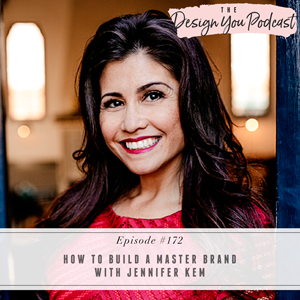
I have had so much fun bringing some powerful women to you over recent episodes, and today is no different! This week, I’m welcoming my friend Jennifer Kem onto the show. She is a beyond incredible businesswoman and is joining me in this episode for such a cool conversation about how to build a master brand.
Jennifer Kem is a Brand Futurist and top media personality, and is frequently asked for her opinions by mainstream media publications such as Forbes Magazine, Business Insider, and Entrepreneur Magazine. She is the 8-figure Founder of the Master Brand Institute and believes that values-driven living is the key to having a fulfilling life while slaying all of your personal & professional goals. She helps entrepreneurs be seen, heard, and paid – all for being themselves.
Tune in to this great episode as Jen shares the 5 principles of building a master brand and shows us how to use them to become a successful entrepreneur. Learn how to view challenges as opportunities for tremendous growth, and why when you know and live by your values, you’ll always make the best decision in your life and business. It’s a note-taking episode, friends, don’t miss it!
If you want help creating a business with thriving revenue streams so that you can design the life you really want this year, now is your chance! We’re going to be opening the doors to the Design You Coaching Program really soon, get on our waitlist now!





